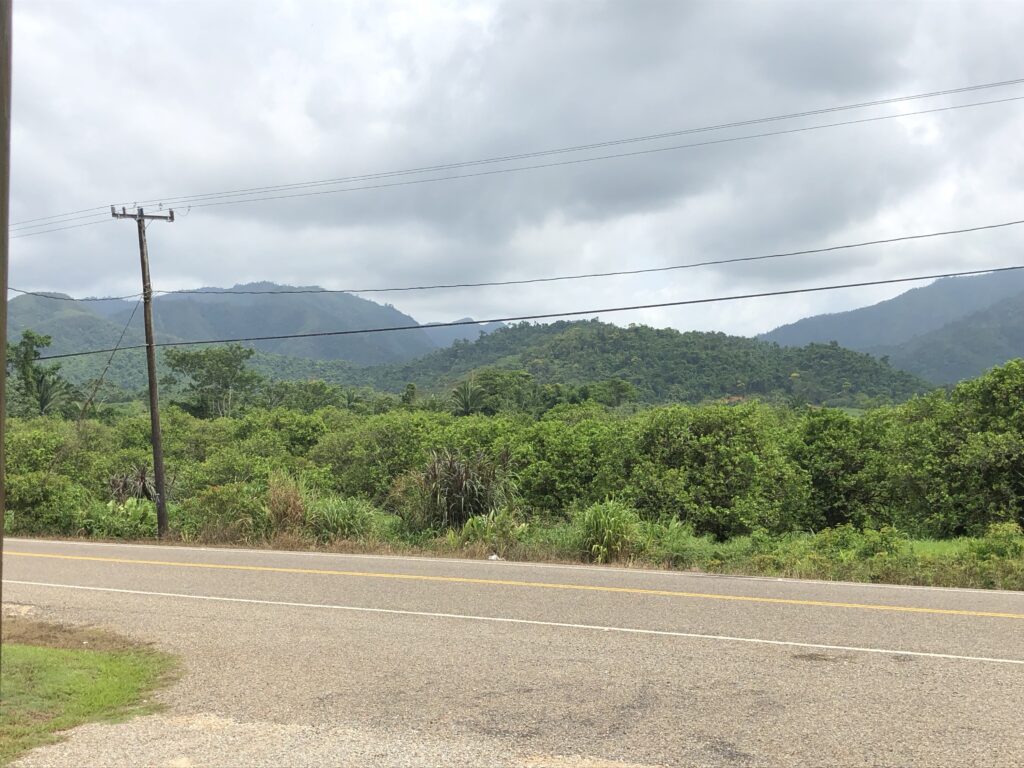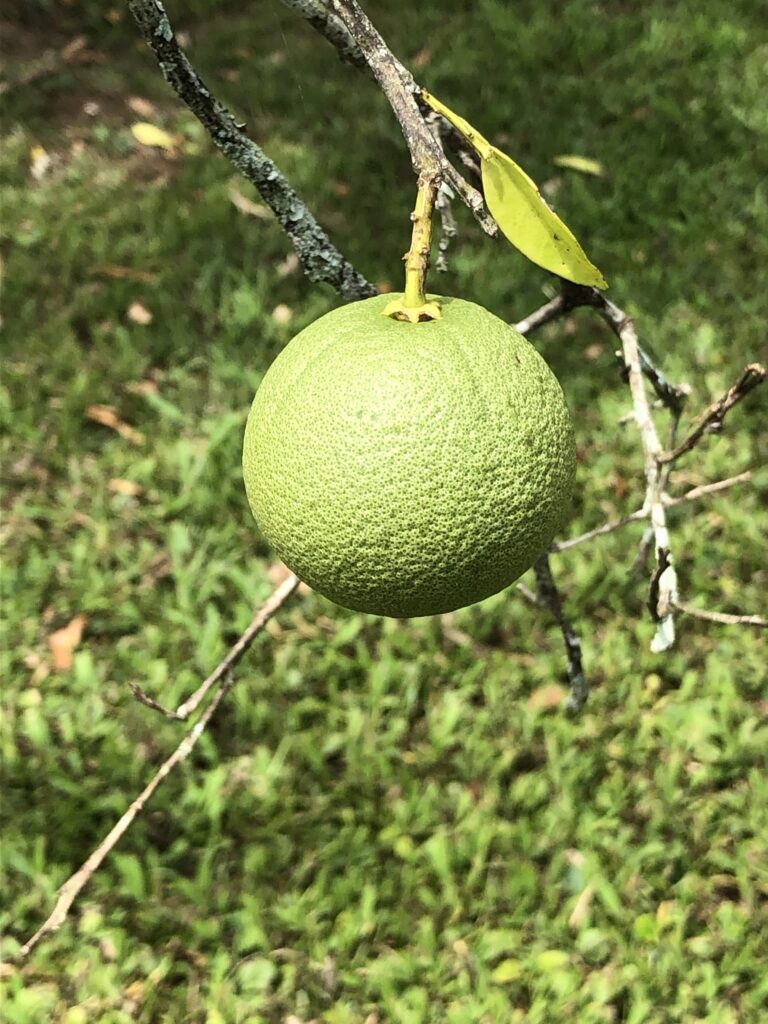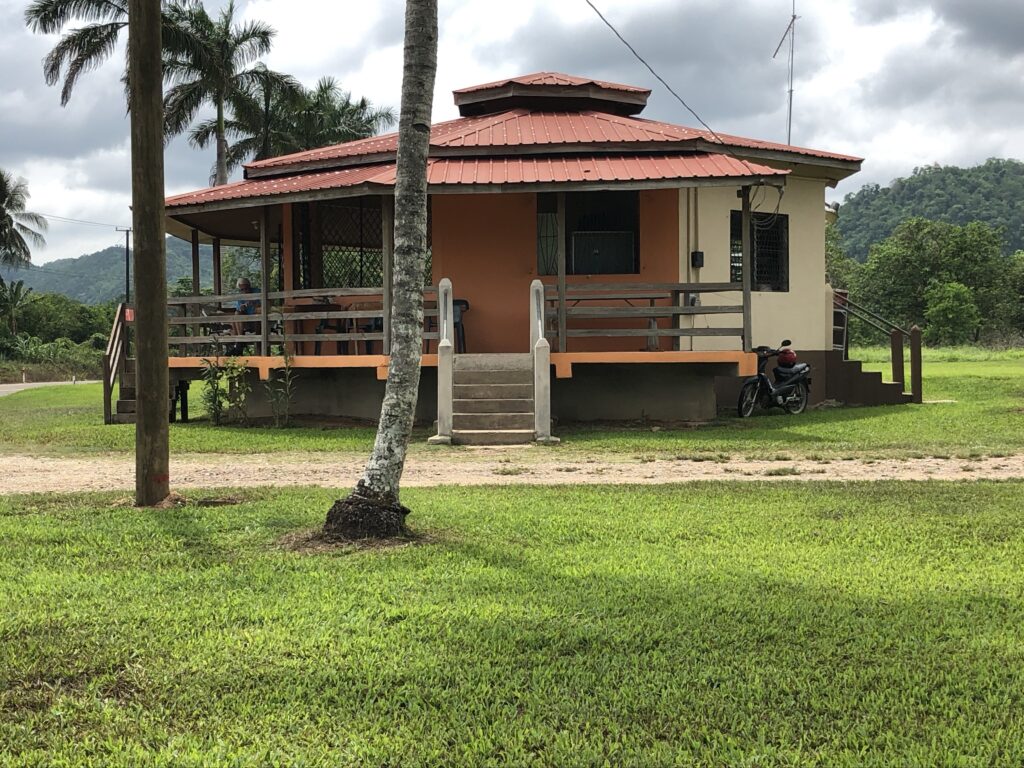Belizeans take their speed bumps very seriously! More on that in a minute. For now, follow along as we head north from the Placencia peninsula through sometimes dramatic always fascinating countryside.
The coastal plain near Placencia reminded us remarkably of Florida. The “jungle” is rather open, and full of pine trees and palm trees. Pine trees in the tropics? Yep. We thought, perhaps like Florida, the pines had been planted for paper, but they aren’t in uniform rows like the citrus trees. We also wondered, since they were all about the same size, if the forest in the area had been affected by Hurricane Iris. While most Americans probably don’t remember it, for the folks in southern Belize, it is a traumatic event they won’t soon forget (similar to the Cerro Grande Fire in Los Alamos).
Iris roared through Belize with 145 mph winds in October 2001. In some villages, including Monkey River Village, that we just visited in our last blog post, more than 90 percent of the homes were destroyed. More than $100 million in crop damage occurred, mostly to bananas. The mangroves and (we think) pines, still show the scars. Old and young still talk about the extensive damage. Iris killed more than 20 people in Belize and nearly 40 before hopping into the Pacific and becoming Tropical Storm Manuel there. What a witch!
Placencia is a playground — beaches, beach bars, and real estate that we found beyond overpriced. After having looked at beautiful homes and condos in beautiful Las Terrenas, DR, for a third or less of the price, we can’t justify living in Placencia. It is a fun place to visit, though.
Continuing north from Placencia, we toured the tiny village of Riversdale. It is not an up and coming resort area, but we did see a roadside hawk (real name of real bird) taking a bath in a road middle puddle.
Just north of there, a dirt road took us through the gorgeous community of Sittee River. These beautiful homes, mostly of American ex-pats as told by the cars and flags, line the wide, slow Sittee River. An idyllic jungle setting. The road eventually brought us to Hopkins, which is beach and resort on one side of the road, and original jungle living on the other — quite a contrast.
As you go down highways and byways in Belize, you will find speed bumps — enormous, teeth-jolting, car-damaging speed bumps. Many of these are in front of schools or bus stops, They were where fruit sellers like to set up with their fresh pineapples, mangos, coconuts, and whatever else happens to be in season. Often they have fresh, cold juice in a baggie, too. These are the best places to buy fruit!
The speed bumps are so ingrained in Belizean culture/roads, that you will even find them on dirt roads like the one in Hopkins. And it is always a good idea to slow down for speed bumps in Belize!
From Hopkins, we had another short jaunt to Dangriga, the cultural capital of southern Belize. We just buzzed through town (as quickly as speed bumps and a maze of one way streets and bridges over stagnant waterways would allow), and this is definitely a place we want to revisit. The largest city in southern Belize, with a population of nearly 10,000, it is home to the Garifuna, a cultural and ethnic group of shipwrecked slaves and native Caribs that is famous for its drumming and unique language. We look forward to learning more.
Dangriga is one end of the Hummingbird Highway. At the other end is Belmopan, the capital city of Belize, a planned community established in the 1970 to move the capital away from the coast (Hurricane Hattie laid waste to Belize City in 1961). Along the Hummingbird Highway are some of the cutest little towns, thousands (perhaps millions!) of citrus trees along with OJ processing plants, and speed bumps. We stopped at what some might consider the middle of nowhere for lunch at Yam Witts. I had salad, along with beans and rice. Bob had a chicken burrito. We both had fresh lime juices — all delicious and a total of $15US for both of us. While there, we visited with a man who works for the Belize Ministry of Works and who told us many of the European Union-sponsored projects in Belize are probably Europeans making up for the guilt they feel about the British raping all of Belize’s mahogany. We find many Belizeans to be gregarious and appreciative of those who are visiting the country to learn and explore, just as this entertaining gentleman was.

Sign for Yam Witts (we don’t like Belikin beer) 
View from Yam Witts, looking toward Sleeping Giant mountain 
A green orange 
Two green oranges 
Yam Witts
We skimmed through Belmopan to head into the heart of the Cayo District, the west of Belize where most of the food is grown. It is home to large Mennonite communities (they apparently have a monopoly on chickens and eggs in Belize). The population density of this region is much greater, and real estate is much cheaper (with a lot less inventory) than Placencia.
We were greeted last night by a massive thunderstorm that had all the locals cheering. The rainy season has arrived, which is great for all the farmers and gardeners and ordinary folks who like a cool, rainy breeze in the evening. We love the mountains and the views here. Imagine the rolling hills of Iowa or Kansas — with palm trees … and speed bumps.
Love this! I want to go!
Did you see a lot of hummingbirds or are they all north now?
We saw quite a few, especially when we stayed at Iguana’s Roost, because they have 15 feeders on the property. I haven’t figured out what kinds we saw yet. I’ve also seen them in flowering trees. There are many species that live here year round.